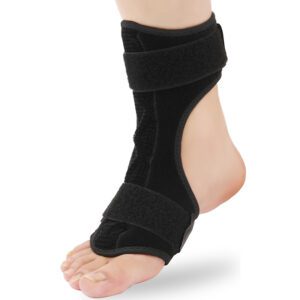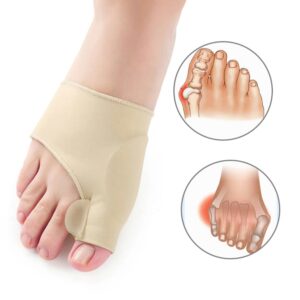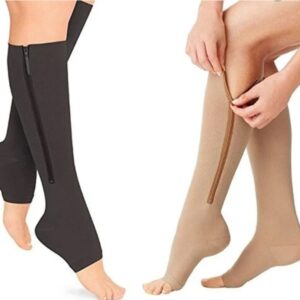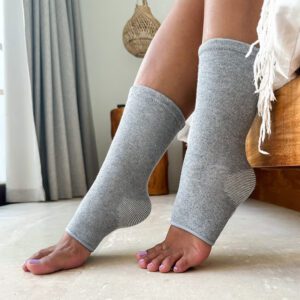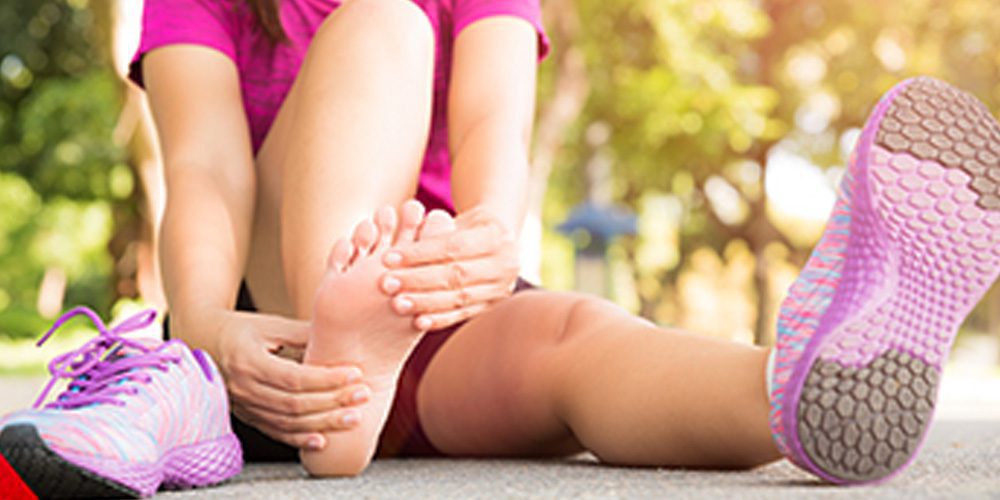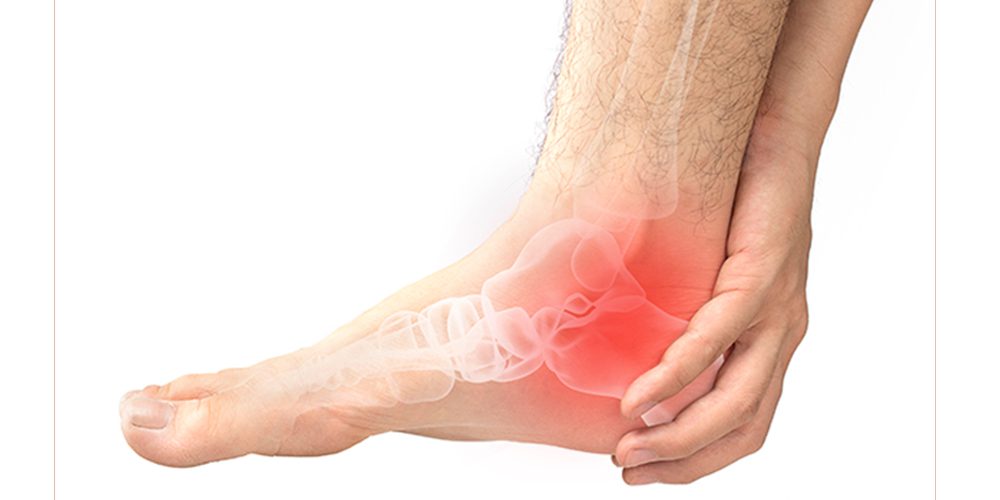Supports, braces and compression sleeves are a great way to improve your quality of life. They can help you do sports better, but they can also help you with everyday tasks if you have joint pain or weak muscles. In this article, we will discuss the different types of supports available and how they can benefit you. Whether you are an athlete or just trying to live a more comfortable life, supports, braces and compression sleeves are worth checking out.
What are supports, braces and compression sleeves and what do they do?
There are a few different types of supports, braces and compression sleeves that can be helpful in managing pain and injury. Be sure to consult with a doctor or physical therapist to find the best one for your needs.
Supports are typically used to stabilize a joint or area of the body. They can be made from a variety of materials, including metal, plastic or fabric. There are also wrist supports, knee supports, back supports and more.
Braces are usually used when there is an injury or surgery that needs to heal. They provide extra support and protection while the body heals. Knee braces, ankle braces and elbow braces are common types.
Compression sleeves are usually worn to help manage pain or swelling. They provide gentle compression and can be helpful in reducing inflammation. There are compression sleeves for the knee, elbow, calf and more.
Supports, braces and compression sleeves can help you in a number of ways. They can:
Improve your quality of life: Supports, braces and compression sleeves can help you live a more comfortable life. If you have pain or swelling in your joints, they can help reduce the discomfort.
Prevent injuries: Supports, braces and compression sleeves can help prevent injuries by stabilizing your joints and muscles. This is especially important for athletes who are at risk for injury.
Relieve pain: If you have pain from an injury or surgery, supports, braces and compression sleeves can help relieve the pain. If you experience knee pain when walking or pain under the sole of your foot because of plantar fasciitis, compression sleeves, socks or supports can help.
Reduce inflammation: supports, braces and compression sleeves can help reduce inflammation. This can be helpful in managing conditions like arthritis or bursitis.
Protect injured areas: supports, braces and compression sleeves can help protect injured areas while they heal. This is especially important for injuries that take longer to heal, such as fractures.
Help you heal after surgery: supports, braces and compression sleeves can help you heal after surgery by providing extra support and protection.
Improve your performance in sports: supports, braces and compression sleeves can help improve your performance in sports. They can stabilize your joints and muscles, which can help you move more efficiently.
Speed up recovery times: supports, braces and compression sleeves can help speed up recovery times. This is especially important for athletes who need to get back to their sport as soon as possible.
Stabilize joints, muscles and tendons: supports, braces and compression sleeves can help stabilize joints, muscles and tendons. This is especially important for people with conditions like joint instability or tendonitis.

How can supports, braces and compression sleeves help you with sports and everyday activities?
For anyone who has ever suffered from a sports injury, the importance of proper support and stabilization is all too clear. But even if you’ve never had a serious injury, you can still benefit from using supports, braces and compression sleeves. These devices help to protect your joints and muscles from the repetitive stress of everyday activities, and they can also improve your performance in sports. In addition, they can help to reduce swelling and inflammation, making it easier to recover from a strenuous workout. With so many potential benefits, it’s no wonder that athletes and trainers alike are increasingly turning to supports, braces and compression sleeves as part of their training regimen.
But these devices used by athletes all around the world are not only great for sports. They help everyday people like you and me get through the day. Supports, braces and compression sleeves can offer relief from conditions like plantar fasciitis, arthritis, bursitis and more. They can also help to prevent injuries by stabilizing your joints and muscles.
Maybe you feel pain in your feet, knees, legs or elbow in the morning after waking up. Maybe you have difficulty walking long distances or after standing for a long time. Or what can you do if you feel pain in your hands or feet midday?
Especially if you get older than 40, you’ll feel some pain in your body more frequently. It can be annoying, and you may not want to take medication for it every day. That’s when supports, braces or compression sleeves come in handy.
Supports, braces and compression sleeves are a great way to improve the quality of your life without having to rely on medication. They can help you stay active and pain-free, whether you’re playing sports or just going about your everyday activities. So if you’re looking for a way to improve your health and quality of life, consider supports, braces and compression sleeves. They may be exactly what you need.
What are the different types of supports, braces and compression sleeves available on the market today?
There are a variety of support devices available on the market today that can help to stabilize joints and muscles and prevent injuries during physical activity. Braces and compression sleeves are two common types of support devices.
Braces are generally larger and more rigid than compression sleeves and are typically used to support a joint that has already been injured.
For example, athletes who have suffered a knee injury may wear a brace to stabilize the joint and prevent further damage. Compression sleeves, on the other hand, are typically used as a preventive measure. They provide less support than braces but can help to increase blood flow and reduce inflammation. They are often worn by people who are involved in high-impact sports, or who have a previous injury that they are trying to prevent from recurring.
There is a wide range of supports, braces and compression sleeves available on the market today and you can buy supports for any body part, with varying compression levels, straps that help you regulate the pressure and support to your liking and made from different materials.
Supports come in all kinds of shapes, colors and designs and are sometimes more fashionable than helpful. Professional athletes often have their unique way of wearing a compression sleeve which makes them more recognizable and stand out.
However, if you prefer function over style, you can wear most products under your clothing. No one will be able to see that you’re wearing a compression sleeve except for you and it can be your little secret.
Which one is right for me – supports, braces or sleeves?
There are a lot of options out there when it comes to choosing the right support for injuries, your sports or type of pain. But which one is right for you? Supports, braces and sleeves all have their own benefits and drawbacks, so it’s important to understand the differences before making a decision.
Supports are designed to offer the most support and stability to an injured joint or muscle. They are typically larger and more rigid than compression sleeves, making them ideal for people who have suffered a recent injury or who participate in high-impact sports. However, supports can be bulky and uncomfortable to wear, and they may limit your range of motion.
Braces are similar. They also need to be removed regularly for cleaning, which can be a hassle. Braces offer more support than compression sleeves but may not be as comfortable to wear. Immobilization is the most common goal when choosing a brace. This is especially important after surgery or if you suffer from acute pain.

Sleeves are the lightest option of the three and are typically used for milder injuries, prevention, pain relief or chronic pain and faster recovery times. They provide compression and support without restricting movement, making them ideal for active people. They are also more comfortable to wear and can be easily removed for cleaning. These are basically the starting point for you as well and the products you should start with when trying different types out.
The most popular sports and how supports, braces and compression can improve your performance
There are a number of popular sports that people enjoy playing, and many of them come with a risk of injuries. Here are some of the most popular sports and the body parts that are most at risk for injuries:
Basketball: ankles, knees
Football: knees, shoulders, elbows
Baseball: shoulders, elbows, wrists
Tennis: elbows, shoulders, wrists
Soccer: knees, ankles, hips
Running: knees, ankles, feet
Hockey: knees, shoulders, teeth
Cycling: knees, back, wrists
Golf: shoulders, elbows, wrists
As you can see, many of the same body parts are at risk for injuries in different sports. However, there are some common injuries that occur in specific sports. For example, tennis elbow is a common injury among tennis players. This is caused by the repetitive motion of the arm during a tennis swing. supports, braces and compression sleeves can help prevent these types of injuries by providing support and stability to the joints and muscles.
There are also some general benefits that supports, braces and compression sleeves can provide for all athletes, regardless of the sport they play. These include:
– improved blood circulation
– reduced muscle fatigue
– reduced risk of injuries
– faster recovery times
In order to reduce the risk of injuries, it is important to wear the right type of supports, braces or orthotics. For example, runners may benefit from wearing ankle supports or orthotics to help reduce the risk of ankle injuries. Knee sleeves can also help reduce the risk of knee injuries.
Basketball players may benefit from wearing knee sleeves or braces to help protect their knees. And tennis players may benefit from wearing wrist supports or braces to help prevent wrist injuries. By wearing the right type of support, you can help improve your performance and reduce your risk of injuries.
Health conditions that benefit from the right type of support, brace and compression
When it comes to protecting your health, the right support can make all the difference. That’s why braces, supports and compression garments are often prescribed for a variety of conditions. Here are some of the most common conditions that can benefit from the right type of support:
• Joint pain: Joints are subject to a lot of wear and tear over the course of our lives. That wear and tear can lead to joint pain, especially as we get older. Wearing a support or compression garment can help to take the pressure off of joints, relieving pain and making it easier to move around.
• Arthritis: Arthritis is a condition that causes inflammation and stiffness in the joints. The right type of support can help to relieve some of the pain and inflammation associated with arthritis. In addition, supports can help to keep joints from stiffening up, making it easier to stay mobile.
• Muscle strain: Muscle strains are common among athletes, but they can happen to anyone. Wearing a brace or compression garment can help to stabilize muscles and prevent further injury.
• Achilles tendonitis: Achilles tendonitis is a condition that causes pain and inflammation in the Achilles tendon. Wearing a compression garment can help to relieve some of the pain and inflammation associated with this condition.
• Plantar Fasciitis: Plantar fasciitis is a condition that causes pain in the heel and bottom of the foot. Wearing compression socks or compression sleeves can help to relieve some of the pain and inflammation associated with this condition.
• Diabetes: Diabetes can cause a number of problems, including nerve damage, poor circulation, and increased risk of infection. Wearing compression garments can help to improve circulation and reduce the risk of infection.
• Swollen feet, ankles, knees or legs: Swelling in the feet, ankles, knees or legs can be caused by a variety of conditions, including pregnancy, obesity and heart failure. Wearing compression garments can help to reduce the swelling and make it easier to move around.
• Inflammation (Bursitis): Inflammation is a common problem that can be caused by a variety of conditions. Compression sleeves can enhance blood circulation and help to reduce inflammation. A brace can limit the range of motion and with faster healing and regeneration.
• Meniscus Tear or Patella Tendonitis: Both meniscus tears and patella tendonitis are common injuries that can be extremely painful. Wearing a knee brace can help to stabilize the joint and take the pressure off of the injured area. In addition, wearing a compression sleeve can help to reduce swelling and pain.
• Runner’s Knee: Runner’s knee is a condition that causes pain around the kneecap. Wearing a knee sleeve can help to stabilize the joint and take the pressure off of the kneecap. In addition, wearing a compression sleeve can help to reduce swelling and pain.
• Bone Spurs (Heel Spurs): Heel spurs are a common problem that can cause pain in the heel. Wearing a heel cup can help to take the pressure off of the spur and reduce pain. In addition, wearing a compression sleeve can help to reduce swelling and pain.
• Ligament or Tendon Injuries: Ligament and tendon injuries are common among athletes. Wearing a brace can help to stabilize the joint and take the pressure off of the injured area. In addition, wearing a compression sleeve can help to reduce swelling and pain.
There are many different types of supports, braces and compression garments available on the market. It is important to consult with a healthcare professional to find the right type of support for your needs. Supports, braces and compression garments are not just for athletes – they can be beneficial for anyone who is dealing with pain or inflammation. If you are looking for relief from pain or swelling, consider investing in a support, brace or compression garment. You may be surprised at how much difference it can make in your life.
Here at BaronActive our goal is to provide affordable solutions for everyone. Without sacrificing quality or comfort. So please head over to our shop and browse our products for more information. I am sure you’ll find something that’ll help you.

Compression sleeves, supports, braces and splints in your everyday life
Most people associate compression sleeves, supports and braces with athletes or older adults. And while it’s true that these products can provide valuable benefits for these groups, there are also many ways that normal, everyday people can benefit from wearing them.
For example, compression sleeves can help to reduce swelling and improve circulation, making them ideal for people who spend a lot of time on their feet. And while they’re often thought of as being exclusively for athletes, knee and elbow supports can also be helpful for anyone who spends a lot of time sitting down. By helping to take some of the pressure off of these joints, they can prevent pain and stiffness.
In short, there are many reasons why wearing a compression sleeve, support or brace can be beneficial for everyone. As your body gets older, and unfortunately weaker, you may want to support it in order to stay as active as ever. Wearing a knee brace, compression socks or an elbow support can help you to stay mobile and pain-free, allowing you to enjoy your favorite activities for longer.
Even normal activities like shopping for groceries, walking up and down stairs or doing basic housework can become hurdles and roadblocks when you get older or feel pain in your hands, feet or knees. But by wearing a supportive sleeve, compression garment or splint, you can make these activities easier and less painful. So don’t wait until you’re injured to start using supports – they can be beneficial for everyone.
The right product for every body part and type of pain
There’s a support product for just about every body part these days. From knee sleeves to wrist splints, there’s something out there to help you if you’re dealing with pain or injury. Here’s a quick run-down of some of the most common support products on the market:
Knee sleeves: Knee sleeves are designed to provide support and stability to the knee joint. They can be worn during physical activity or for long periods of time when you’re not moving around much. They’re often used by people with arthritis or other conditions that cause knee pain.
Wrist splints: Wrist splints are usually worn at night to help keep the wrist in a neutral position. This can help reduce pain and inflammation in the joint. They’re often used by people with carpal tunnel syndrome or other wrist problems.
Elbow sleeves: Elbow sleeves are worn to provide support and stability to the elbow joint. They can help reduce pain and inflammation in the joint, and they’re often used by people with tennis elbow or other elbow problems.
Shoulder braces: Shoulder braces are worn to provide support and stability to the shoulder joint. They can help reduce pain and inflammation in the joint, and they’re often used by people with rotator cuff injuries or other shoulder problems.
Ankle supports: Ankle supports are worn to provide support and stability to the ankle joint. They can help reduce pain and inflammation in the joint, and they’re often used by people with sprained ankles or other ankle problems.
Compression socks: Compression socks are worn to help improve circulation and reduce swelling. They can be used by people who spend long periods of time on their feet, or by people with conditions that cause poor circulation.
Foot Sleeves: Foot sleeves are worn to provide support and stability to the foot. They can help reduce pain and inflammation in the foot, and they’re often used by people with plantar fasciitis or other foot problems.
Back Braces: Back braces are worn to provide support and stability to the back. They can help reduce pain and inflammation in the back, and they’re often used by people with lower back pain or other back problems.
Arm Sleeves: Not only worn by basketball players and golfers, arm sleeves can actually help with a number of conditions. They can help improve circulation, reduce swelling, and provide support and stability to the elbow and shoulder joints.
Calf Sleeves: Calf sleeves are worn to provide support and stability to the calf muscle. They can help reduce pain and inflammation in the muscle, and they’re often used by people with Achilles tendonitis or other calf problems.
Wrist Supports: Often worn for carpal tunnel syndrome, a wrist support helps keep the wrist in a neutral position and takes the pressure off of the median nerve. If you have a weak wrist or pain while cooking, cleaning, or typing, a wrist support may help you.
Insoles & Orthotics: If you have flat feet, high arches, or other foot problems, insoles and orthotics can help. They provide support and stability to the foot, and they can help reduce pain and inflammation in the foot.
As you can see, there is a product for every body part and type of pain. Whether you’re dealing with an injury or just looking to improve your everyday life, supports, braces, and compression sleeves can help.
Compression socks for running – what to look for
If you’re a runner, you know that every little edge can make a difference. That’s why more and more runners are turning to compression socks.
By applying graduated pressure to the legs, compression socks can improve blood circulation and reduce muscle soreness. They can also help to prevent injuries such as shin splints and Achilles tendonitis.
When shopping for compression socks, it’s important to look for a pair that fits snugly but is not too tight. Be sure to choose a pair that is specifically designed for running; traditional dress socks will not provide the same level of support. You’ll also want to consider the fabric; many runners prefer socks made from moisture-wicking material that will keep their feet cool and dry.
There is no question that runners put a lot of stress on their legs. Not only are they constantly pounding the pavement, but they are also subject to a lot of impact and vibration. This can lead to pain and fatigue, especially in the knees and ankles. To help prevent these problems, many runners rely on compression socks.
Compression socks work by applying gentle pressure to the legs. This helps to improve circulation and reduce inflammation. In addition, compression socks can help to reduce the risk of injuries by providing support for the muscles and joints.
There are many studies that have been conducted on the benefits of compression socks for runners. One study found that runners who wore compression socks had less pain and fatigue than those who didn’t. Another study found that compression socks could help to prevent injuries. And a third study found that compression socks helped improve blood flow to the legs.
So if you’re a runner, there’s no reason not to try compression socks. They could help you run faster, farther, and with less pain. And they might even help you avoid injuries.
The importance of an active lifestyle and how the right supports and braces can help
An active lifestyle is important for overall health and well-being. Exercise helps to improve cardiovascular health, maintain a healthy weight, and reduce the risk of chronic diseases such as diabetes and heart disease.
However, an active lifestyle can also put a strain on the body, causing joint pain and other injuries. Wearing the right supports and braces can help to prevent these injuries by stabilizing joints and keeping muscles and tendons in alignment.
Joints can become inflamed and muscles can be strained, making it difficult to stay active. The right supports and braces can help to alleviate pain and prevent injuries, making it easier to maintain an active lifestyle.
For example, knee supports can help to stabilize the joint and reduce inflammation. This can be a big help for athletes or anyone who suffers from chronic knee pain. Ankle supports can also be helpful in preventing sprains and stabilizing the joint. And wrist supports can help to prevent carpal tunnel syndrome and other conditions that can cause pain and difficulty using the hand.
The right support or brace can make a big difference in maintaining an active lifestyle. Ask a personal trainer or doctor for recommendations on the best type of support or brace for your needs.
Why choose a support, brace or compression sleeve from Baron Active
Here at BaronActive, we’re dedicated to offering quality products that are developed with professional athletes, physiotherapists and surgeons. But at the same time, unlike most other companies, we always want to make these awesome products as affordable as possible, so they can help as many people as possible.
We offer a wide range of supports, braces and compression sleeves for different needs. Whether you’re looking for a knee support, an ankle support or a wrist support, we have you covered. And our products are made from high-quality materials that are designed to last.
Just head over to our shop here and have a look at our most popular compression sleeves, compression socks, knee braces and back support braces. I am sure you’ll find the right product for your needs. And if not, please send me a message through the contact us page. We’re always looking for new products that we currently don’t offer, but that are capable of helping other people like you. Just let us know about your condition and type of pain and we’ll discuss this with our physiotherapists to come up with a product.









